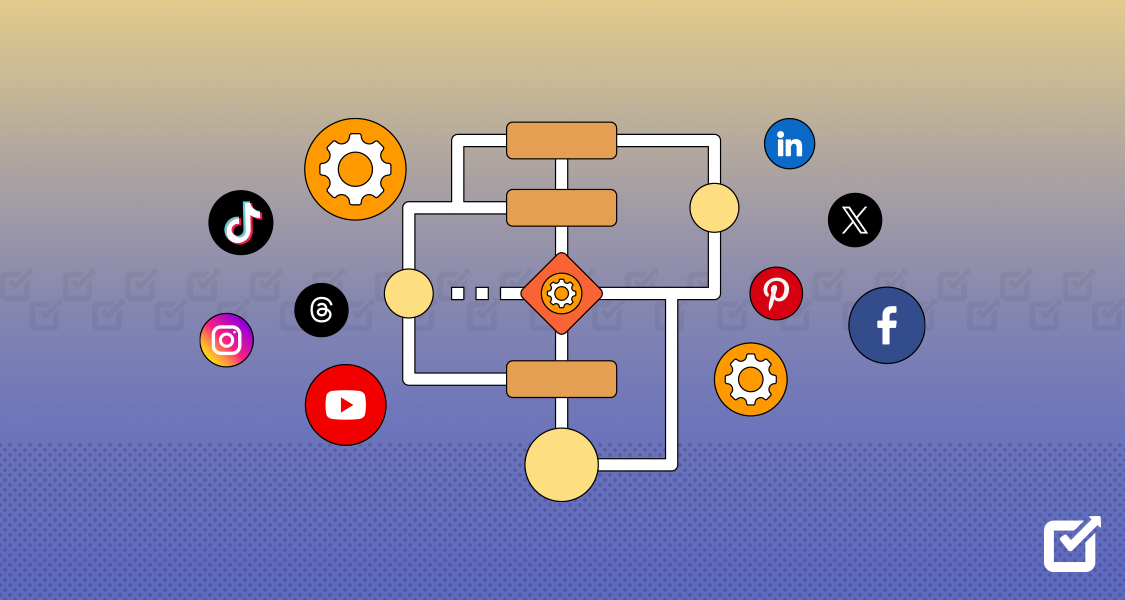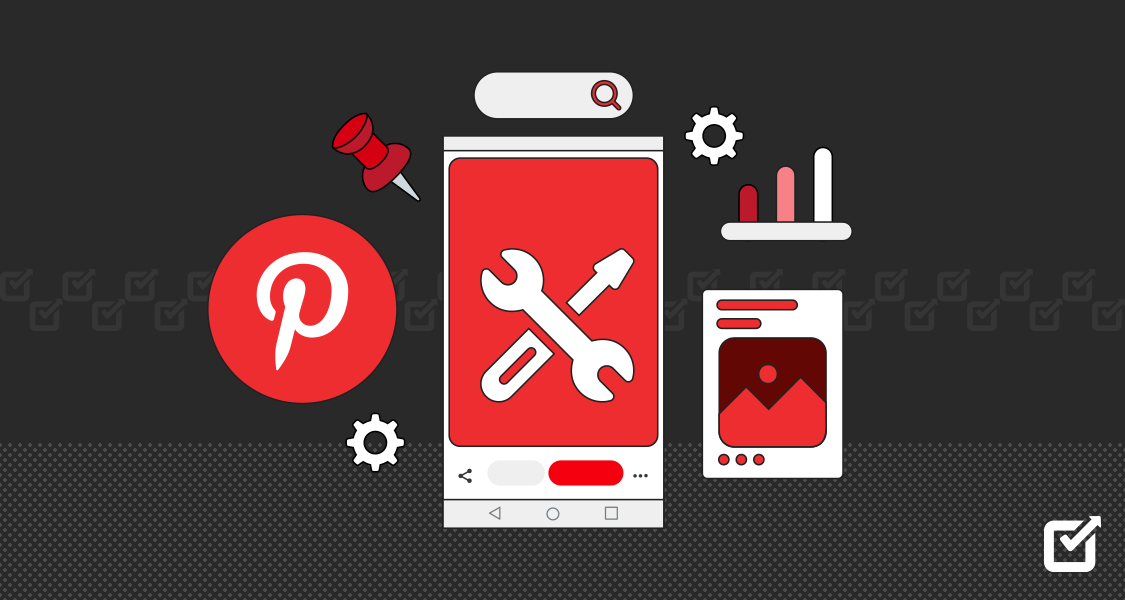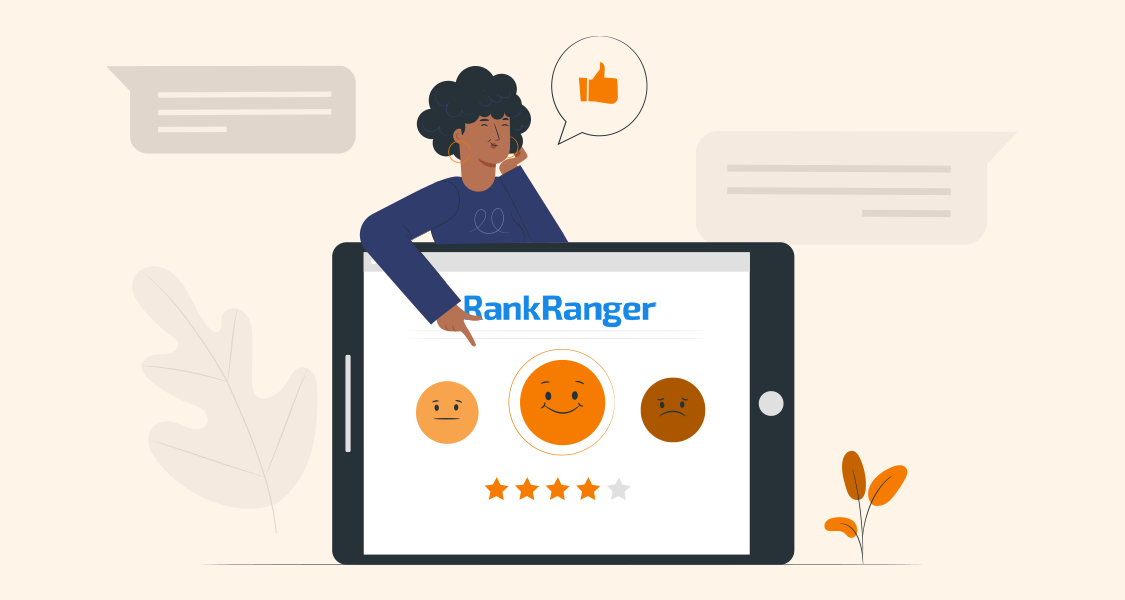You’re scrolling through your feed, double-tapping on cute puppy pictures, and drooling over delicious food posts. Suddenly, you notice something intriguing.
Despite following hundreds of accounts, your feed seems to be filled with similar or closely related content. Even some times it feels like the platform has a crystal ball or a direct line to your inner thoughts.
Out of all the random thoughts, there might be one question always twirling in your mind: How does this social media platform know you so well? Well, it’s not some spooky sorcery at play here. It’s just good ol’ social media algorithms doing their thing behind the scenes.
In this guide, I’ll delve into the intricacies of social media algorithms, exploring how they prioritize content, determine what appears on your feed, and ultimately influence your online experience.
But remember, navigating the world of social media algorithms can be complex and time-consuming. That’s why it’s essential to arm yourself with the right tools, such as social media management software, to help streamline your efforts and maximize your impact.
What is a Social Media Algorithm?
A social media algorithm is a set of rules and calculations that social media sites use to determine which content to show users. The algorithm analyzes various factors to decide content placement on a user’s feed.
Social media platforms use algorithms to enhance user experience by showing them content that is most likely to be interesting or relevant to them.
How Do Social Media Algorithms Work?
Remember the good old days when your social media feed was displayed in chronological order, with the newest posts appearing first? Well, those days are long gone.
Nowadays, algorithms work by analyzing a multitude of factors to determine which content to display on your feed, including:
Your Preferences and Behavior
Social media algorithms are like digital detectives, constantly analyzing user behavior to fine-tune their recommendations. As these algorithms collect more data over time, they become more sophisticated in their decision-making. They learn from past interactions to tailor content suggestions specifically to each user’s preferences.
So, every time you stop to admire a breathtaking travel photo or chuckle at a witty meme, the Facebook algorithm takes note. It learns what you’re into – whether it’s cute puppy videos, mouthwatering food pics, or hilarious memes.
As you continue to interact with the platform, liking, sharing, and exploring, the algorithm gets better at predicting what you’ll enjoy and adjusts your feed accordingly.
Your Location
Social media platforms know where you are thanks to location data from your device. They use this information to personalize your feed with content that’s relevant to your location.
For example, if you’re in New York City, you might see posts about events, restaurants, or attractions happening in the area. Or, if you’re traveling to a new city, you might get recommendations for nearby places to explore.
But why does location matter? Well, it’s all about making your social media experience more relevant and useful. By showing you content based on your location, algorithms can help you discover things that are happening in your area, connect with local businesses, and even meet new people nearby.
Plus, it adds an extra layer of personalization to your feed. Instead of seeing generic content that could be from anywhere in the world, you get stuff that’s tailored specifically to your location.
Your Relationship With the Content Creator
Social media algorithms also take into account how closely connected a user is to content creators based on their interactions. They determine the strength of the relationship by the frequency and depth of these interactions.
For instance, if you frequently engage with a particular content creator by liking, commenting, and sharing their posts, it signals to the algorithm that there is a strong connection between you two. As a result, the algorithm may prioritize showing more of that content creator’s posts on your feed.
Content Relevance
Content relevance is a crucial factor that social media algorithms take into account when determining what content to display on your feed. Essentially, it’s all about making sure that the content you see is aligned with your interests, preferences, and needs.
To assess relevance, algorithms analyze various signals, such as the content of the post, keywords, hashtags, and your past interactions with similar content. For example, if you frequently engage with posts about fitness and healthy living, the algorithm may prioritize showing you content related to those topics.
Timeliness
While timeliness is not the sole factor that determines which posts make it to the top of users’ feeds, it’s still an important factor. After all, who doesn’t love staying up-to-date with the latest news, trends, and happenings?
Social media algorithm statistics reveal that people share millions of posts on social media platforms every minute. Algorithms usually prioritize the most recent content to ensure users are presented with timely updates and news.
Algorithms give a little extra love to the newest posts, making sure they appear prominently and are seen before they become outdated. This means that timely content, such as breaking news, trending topics, or current events, will appear on your feed more often.
User Engagement
Algorithms are all about delivering the best possible experience for users, and they know that engagement is a key indicator of quality content.
So, when posts rack up likes, comments, and shares, it tells the algorithm that the content is worth paying attention to. And what does the algorithm do? It rewards the content creator by giving their posts more visibility and showing them to more people on users’ feeds.
Media Type
Social media algorithms treat different types of content (e.g., videos, photos, GIFs, etc) differently. Video content often receives higher priority due to one simple reason – it’s dynamic, immersive, and can evoke emotions in a way that photos or text posts sometimes can’t.
So, when it comes time to decide what content to show us, they give a little nod to videos and interactive posts, knowing that they’re more likely to keep us scrolling, tapping, and engaging with the platform.
So, the next time you’re crafting a post for social media, don’t underestimate the power of video.
But hey, that’s not to say that photos or links get left in the dust. Each content type has its own unique strengths and appeal. It’s all about finding the right balance and giving users a diverse mix of content to enjoy.
Content-Type: Paid vs. Non-Paid
Social media platforms rely heavily on advertising as a primary source of revenue. Sponsored posts and native advertising, in particular, are types of paid content that businesses and advertisers pay to have promoted on users’ feeds.
Here’s an example of a sponsored post on Facebook

Content-Type: Paid vs. Non-Paid Example Since sponsored posts and native advertising generate revenue for social media platforms, algorithms may give them higher priority in users’ feeds. This means that you are more likely to see sponsored content from businesses and advertisers, especially if it aligns with your interests and preferences.
Profile Authority
Profile authority refers to the credibility, influence, and popularity of a social media account. Algorithms assess the credibility of a profile based on various factors, such as the authenticity of the account, the quality of its content, and its engagement with the community.
For instance, Twitter uses an algorithm known as TweetCred to assess the credibility of users’ profiles. Such algorithms deem profiles that consistently share accurate, valuable, and trustworthy content as more credible.
Algorithms also consider the influence of a profile within its niche or community. They perceive profiles with large following, high engagement rates, and a track record of influencing audience behavior as influential.
The popularity of a profile, measured by factors like the number of followers, likes, shares, and comments, is another aspect that social media algorithms consider. They give a higher priority to profiles with a larger and more engaged audience.
Based on these factors, social media algorithms may prioritize content from profiles with higher authority, ensuring that users get to see content that is credible, influential, and popular within their niche or community. This helps algorithms deliver a more relevant and engaging user experience, as users are more likely to find value in content from authoritative profiles.
Virality
Social media algorithm research also reveals that virality is one of the factors that social media platforms usually consider. Virality in social media refers to the phenomenon where a piece of content, such as a post, video, or meme, spreads rapidly and widely across various social media platforms.
Now, here’s why social media algorithms are all about that viral content: it’s like rocket fuel for engagement. When a post goes viral, it spreads like wildfire, getting shared, liked, and commented on by tons of people.
Since algorithms love nothing more than content that gets people talking and interacting, they push viral content to the top of users’ feeds.
10 Tips to Win Over Social Media Algorithm
If you are running a business or trying to boost your influence online, these sneaky algorithms can make or break your success on social platforms. But don’t worry; I’ve got you covered with ten expert tips to help you crack the code and win them over.
Encourage Engagement
Now that we’ve established that social media algorithms have a soft spot for posts with high engagement rates, it’s clear that encouraging users to interact with your content is key to boosting visibility.

Encourage Engagement So, how can you get your followers to engage? One of the simplest ways to encourage engagement is by asking questions. Here’s an example:
Whether it’s in your captions or within the content itself, prompting your audience to share their thoughts, opinions, or experiences can spark conversations and encourage them to hit that comment button.
Another effective tactic is to run contests or giveaways. Who doesn’t love the chance to win something cool, right?
You can motivate your followers to like, comment, share, or tag their friends in your posts by offering incentives like prizes, discounts, or exclusive offers.
Here’s an example from Social Champ

Social Champ example When you offer such giveaways, it’s a win-win situation – your audience gets a chance to win something awesome, and you get a boost in engagement and visibility.
Engage with Your Audience
You shouldn’t just sit back and wait for engagement to roll in – you’ve got to engage with your audience too. That means responding to comments, messages and mentions promptly.
Think of it as a two-way conversation – you wouldn’t ignore someone who’s talking to you in real life, right? So why leave your audience hanging online?

Starbucks example Starbucks is one of the brands that engage with their audience on social media. Here’s one of their many responses to their audience:
When you take the time to respond to your followers’ comments, answer their questions, and acknowledge their mentions, you’re showing them that you care about what they have to say.
Related Article: 6 Social Media Engagement Ideas to Embrace Your Audience
Create High-Quality Content
Users find high-quality content irresistible, making them more inclined to engage with it. The higher the engagement rate, the more likely the algorithms are to push the content on users’ feeds
To create high-quality content that captures your audience’s attention and drives engagement, you should first focus on providing value to your audience.
Whether it’s informative, entertaining, or inspiring, your content should offer something meaningful and relevant to your followers. Consider their interests, needs, and preferences when crafting your posts, and aim to deliver content that resonates with them on a personal level.
Secondly, prioritize visual appeal. Invest in high-quality images, videos, and graphics that grab attention and make your content stand out in a crowded feed.
Lastly, stay consistent with your branding and messaging. Develop a cohesive style and tone that reflects your brand’s personality and values across all your content.
Consistency helps to reinforce your brand identity and makes your content instantly recognizable to your audience, building brand loyalty and driving engagement over time.
Use Social Media Hashtags Strategically
Hashtags act as a powerful tool for increasing the reach and discoverability of posts, ultimately influencing social media algorithms to recommend them to users’ feeds.
See how @heatnwear utilizes relevant hashtags in their Instagram posts:

Social Media Hashtags example Algorithms usually categorize and index relevant hashtags, making them more discoverable to users who are interested in those topics.
But it’s not just about slapping any old hashtag onto your posts. Nope, you’ve got to be strategic about it. Think about your target audience, the topics they’re interested in, and the hashtags they’re likely to follow.
You can consider using a hashtag generator tool, as it simplifies the process of discovering hashtags that go well with your posts, as well as with your audience. Once you find relevant hashtags, sprinkle them into your posts like fairy dust, and watch as your reach and engagement skyrocket.
Related Article: Social Media Hashtags: Become More Discoverable in 2025
Go with the Trend
You should jump on the trend train for two big reasons. One, it ensures your content resonates with your audience.
When you create content that aligns with trending topics, you’re tapping into what’s top-of-mind for your audience. Whether it’s a viral meme, a popular hashtag, or a current event, riding the trend wave shows your audience that you’re in tune with what’s happening in the world and that you’re speaking their language.
Two, you’re highly likely to catch the algorithm’s attention. When you post content around trending topics, you’re signaling to the algorithm that your content is timely, engaging, and worthy of being pushed to more users’ feeds.
So, whether it’s hopping on a viral dance challenge, sharing a trending meme, or joining the conversation around a hot-button issue, don’t be afraid to go with the trend.
You can leverage tools like Google Trends to discover what’s currently trending online across various topics and industries. .
Post Consistently
Social media algorithms are likely to favor creators who post consistently because it signals to them that they are active, engaged, and committed to providing fresh content for their audience.
To ensure you maintain consistency, you should develop a content calendar that outlines when and what type of content you will be posting. This can help you stay organized, plan ahead, and ensure a steady flow of content for your audience.
If you have a lot of things to juggle, maintaining a consistent posting schedule can be challenging. That’s where a social media scheduler comes in handy. This nifty tool allows you to plan and schedule your posts in advance, ensuring that your content goes out at the right time, even when life gets hectic.
Stay on Top of Your Posting Game with Social Champ!
With this scheduler’s powerful scheduling features, you can plan, organize, and schedule your posts with ease.
Optimize Post Timing
Even if your content is top-notch and contains all the right hashtags, it won’t make a difference if it’s only seen by a small group of people.
So, how do you ensure that your amazing content doesn’t go to waste? It’s by posting it when your audience is most active and likely to engage.
You can experiment with different posting times and monitor the performance of your posts. Doing so can help you refine your strategy and identify the optimal times to reach your audience.
But wait – how do you know when your audience is most active and likely to engage? This is where my eighth tip comes in.
Utilize Insights and Analytics
Social media platforms provide analytics tools that offer valuable insights about your audience’s behavior, including when they are most active and likely to engage with your content.
Here’s how to access Instagram analytics from your profile.

IG analytics 1 Instagram analytics can enable you to analyze metrics such as post reach, impressions, likes, comments, and shares.

Instagram analytics 2 When you analyze these metrics, you can gain insights into the times and days when your audience is most receptive to your content.
Armed with this information, you can strategically schedule your posts to coincide with these peak engagement periods, maximizing the visibility and impact of your content.
Related Article: Decoding the Best Time to Post on Social Media
Collaborate With Others
When you team up with influencers, brands, or content creators in your niche, you’re tapping into their audience and reaching new eyeballs that might not have discovered you otherwise.
When these new folks start engaging with your content – liking, commenting, and sharing – it sends a powerful signal to the algorithm that your content is relevant and worth promoting.
So, before you know it, your content starts popping up on more users’ feeds, gaining traction, and reaching even more people.
Stay Up-to-Date with Social Media Algorithms
Social media algorithms are constantly evolving to prioritize certain types of content and user behaviors. Staying up-to-date with these changes is crucial so as to remain relevant, maximize visibility, and drive engagement.
You’re probably wondering: how can I track social media algorithm changes? Well, there are several ways, actually. The first way is following official announcements.
You should keep an eye on the official blogs, social media accounts, and press releases of social media platforms. They often announce updates and changes to their algorithms, providing valuable insights into how the changes may affect your content strategy.
The second way is by monitoring industry news and blogs. You should stay tuned to reputable industry news sources, blogs, and publications that cover social media marketing and technology trends. These sources often analyze algorithm changes and provide in-depth analysis and commentary to help you understand their implications.
Lastly, you can join social media marketing forums, groups, and communities where professionals discuss algorithm changes and share insights and best practices. Engaging with peers can provide valuable perspectives and help you stay updated on the latest trends.
By combining these strategies and staying vigilant, you can effectively track social media algorithm changes and make informed decisions to optimize your content strategy for maximum impact and engagement.
Leverage Social Champ’s Powerful Analytics Feature
Gain valuable insights, track performance, and optimize your content strategy for maximum impact.
Conclusion
Navigating social media algorithms is like mastering a game – it requires strategy, patience, and a keen eye for trends. And just like in a game, understanding the mechanics behind social media algorithms gives you an edge over the competition. You also need to stay on your toes, adapting your approach as the rules of the game change. By getting the hang of how these algorithms tick and using the right tools and tricks, you can give your visibility and engagement on social media a serious boost.
And speaking of the right tools, Social Champ is one of those social media management tools you can’t afford to miss. With its robust scheduling features and analytics tools, this tool can empower you to stay ahead of the curve, optimize your content strategy, and drive meaningful results.


















1 thought on “Understanding Social Media Algorithm 2025: 10 Tips for Social Media Success”
I find this very helpful and insightful. I should be able to handle my social media accounts better with this. Took note and I’m working with it. Thank you so much